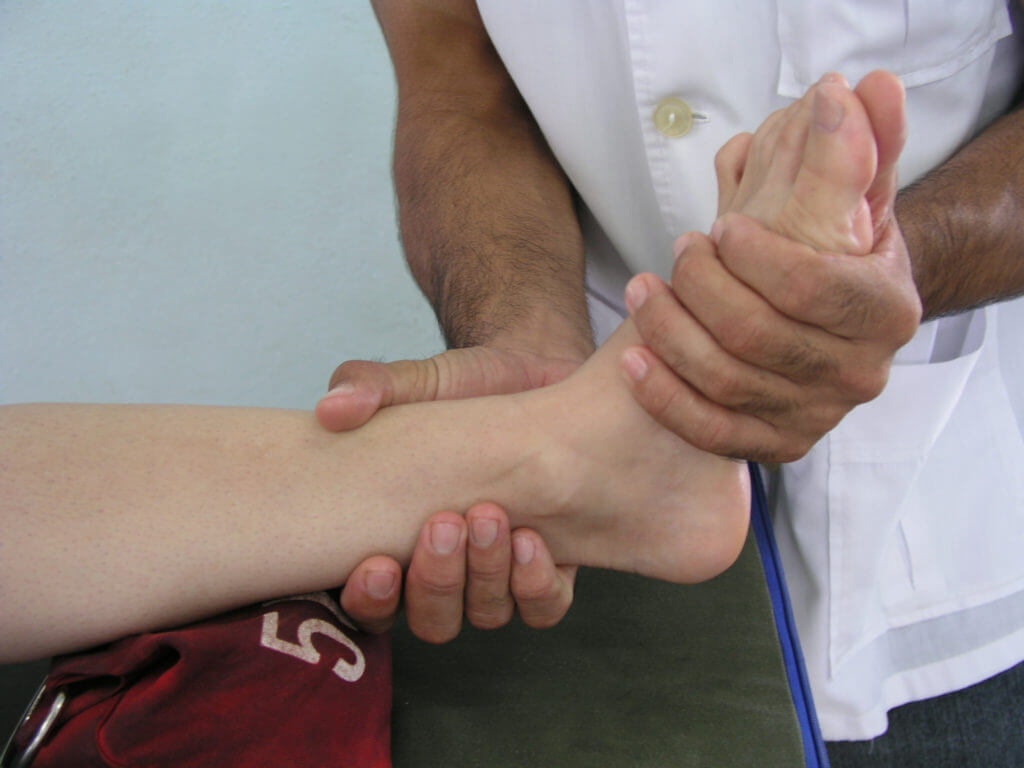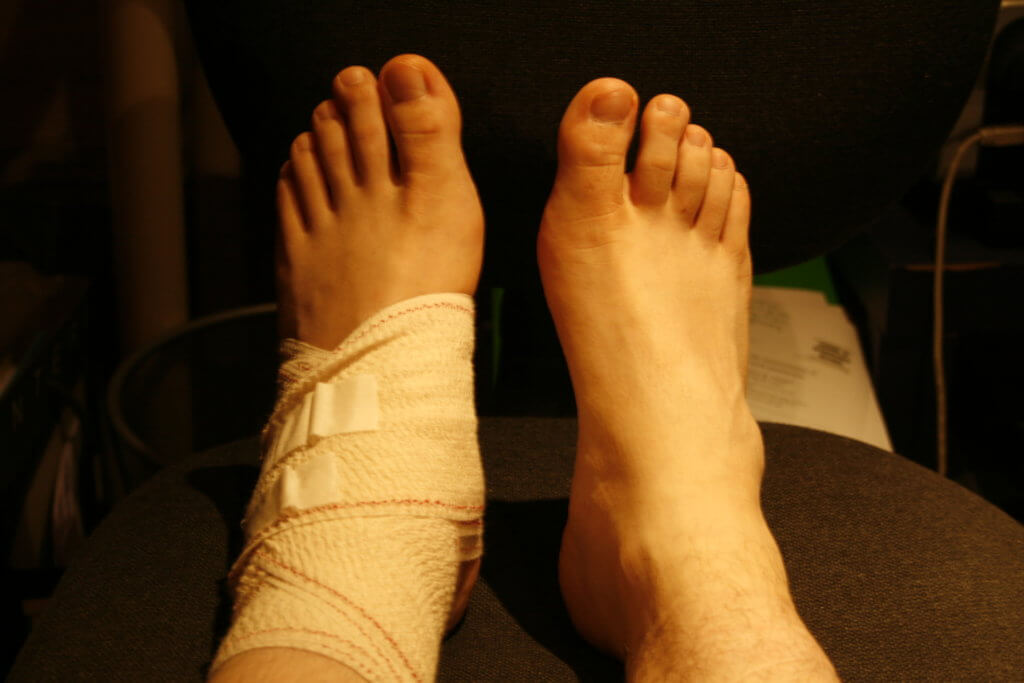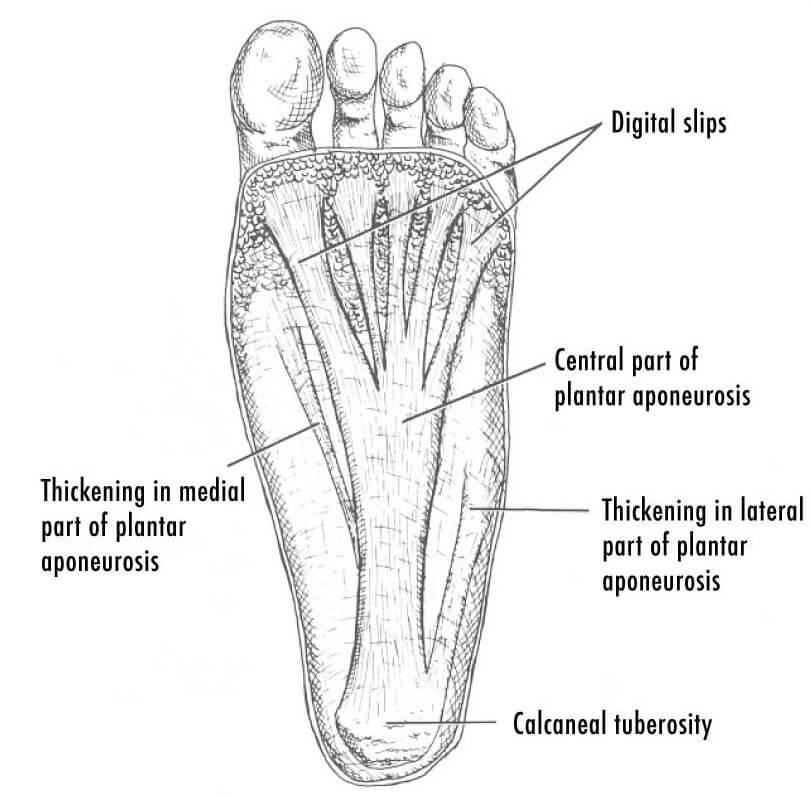Did you know that there are 24 bones, 34 joints, and more than 100 ligaments, tendons and muscles in each foot and ankle? That’s a lot that needs to work together in order to support the entire body as you move around every day.
If something is wrong with one part of the structure, it can create pain that might radiate throughout your body. Foot pain can lead to a limp or adjusting your gait and posture, which then affects your knees, hips and back.

Your physical therapist is an expert in understanding why your feet may be hurting and knowing what treatments will be helpful. Here are some of the most common causes of foot and ankle pain.
Strains and sprains
The experts at HealthWest Physical Therapy, a Physiquality member in San Marcos, California, distinguish between sprains and strains as follows: “A sprain occurs when a ligament is stretched too far or tears. A strain happens when a muscle or tendon becomes overstretched.” It often happens when we miss a step or curb and roll our ankle, moving the joint in a way that doesn’t normally happen.

The severity of such injuries can range from a mild sprain or strain that will be fine after Rest, Ice, Compression and Elevation (you know, RICE) to a tear in the tendon that requires surgery. If you still have pain after using RICE for a few days, talk to your physical therapist or doctor in order to determine how severe the injury is, as well as how to treat it.
Tendonitis
Tendonitis is inflammation or swelling of the tendons in the joint. Given the number of tendons in the foot and ankle, this can happen in several locations, note the physical therapists at In Motion O.C., a Physiquality member in Irvine, California. The most common locations are peroneal tendonitis, on the outside of the heel and ankle; Achilles tendonitis, behind the heel and upwards into the calf; and posterior tibial tendonitis, on the inside of the heel and ankle. Regardless of location, the tendonitis is usually caused by overuse of the tendon.
Plantar fasciitis
Blake McDonald, PT, DPT, a physical therapist at Physiquality member clinic Arizona Orthopedic Physical Therapy, explains that plantar fasciitis develops on the bottom of the foot, in the plantar fascia, or connective tissue. Similar to tendonitis, when the fascia is overused, either through too much time on your feet or poor foot mechanics and gait, the fascia can either thicken or thin, resulting in pain and loss of mobility in the foot.

It can help to stretch the bottom of your foot before activity – Blake says that the yoga pose Downward Facing Dog is one of the best ways to stretch your feet and calves. Supportive shoes are also important, and depending on the shape of your foot, orthotics can be helpful as well. If the pain becomes acute, Blake recommends applying heat to the area to loosen the tissue and reduce pain, but if the pain becomes chronic, talk to your physical therapist about how to treat it over the long term.
Flat feet
Also described as fallen arches, HealthWest Physical Therapy explains that this happens when the tendons in the arch (the bottom of the middle of your foot) are not working together to support the foot properly. This can become extremely painful over time.
A physical therapist has lots of resources that can help with this condition. They can develop an exercise regimen for you to strengthen the tendons to support the foot better. And some also offer custom orthotics that can be placed in your shoes, to support the foot arch.
Fractures
While any of the bones in the ankle or foot can be broken (even the toes), larger bone fractures in the tibia or fibula in the lower leg, or the talus in the ankle, will take longer to heal. This often includes the use of a walking boot to reduce pressure on the joint while healing, or even the use of a scooter to let the bones heal without any weight on the joint at all.

The team at In Motion O.C. notes that physical therapy is often necessary after such breaks as the muscles surrounding the joints can atrophy or shrink while the bones are healing. A PT can work with you to strengthen those muscles and get you back to daily activities, whether they are more basic, like walking and climbing stairs, or more active, like getting back to your chosen sport.
If your feet or ankles are becoming a pain, it’s time to talk to a physical therapist. Use our locator below to find a Physiquality member near you.
Thank you to our contributors:

Arizona Orthopedic Physical Therapy is a Physiquality member with six locations throughout the Phoenix metropolitan area, including Kids Place, a clinic focused on pediatric PT, OT and SLP. Founded by Ryann and Teri Roberts in 2007, AZOPT believes everyone should have the opportunity to feel better, function better, and live better.

Physiquality member HealthWest Physical Therapy is in San Marcos, CA. Owner and physical therapist Gwen Alden makes sure that all of her clients, both young and not so young, get the quality time, care and compassion during their recovery that they deserve.

In Motion O.C. is a Physiquality member in Irvine, CA. In Motion O.C. now has three locations in Orange County, including Irvine, Fountain Valley and Huntington Beach. They have the distinction of being the #1 ranked physical therapy company in America on both Yelp and Google Reviews.